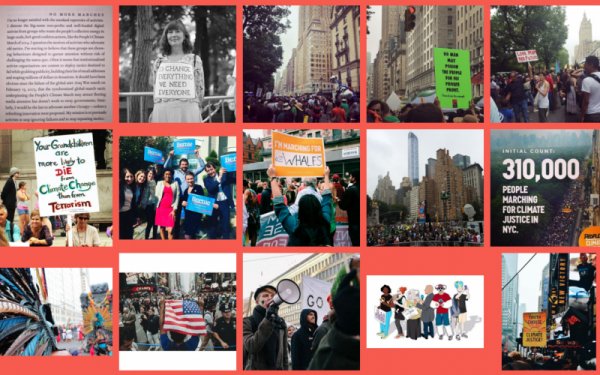
By the people for the planet – People’s Climate March, November 2015
Across Australia, there is a grass roots mobilisation of hundreds of organisations who have partnered with the People’s Climate March on behalf of their constituents. A quick look at www.peoplesclimate.org.au/endorse reveals the extent of community support for this event. At the time of writing, some 15,000 individuals had also rsvp’d to attend a march.
History demonstrates that collectively, we are powerful. Women’s rights, civil rights, the ending of apartheid, to name a few, have all resulted from individuals like us standing up to be counted for what we believe in.
Doctors, by virtue of their standing in the community and their role at the forefront of healthcare, have a special authority and a vocational responsibility when it comes to speaking out about the health impacts of injustice, inequity, and of course environmental responsibility. We know that human health and well-being is inseparable from environmental health and sustainability, therefore dependent on our stewardship of the planet.
By definition, Lifestyle Medicine provides a framework for understanding and practising this knowledge, whether as a medical practitioner, allied health or health policy professional. Lifestyle Medicine can be described as the intersection of medicine and healthcare with behavioural, social, environmental, socioeconomic and other factors impacting on health and wellbeing.
Not just the largely ‘self-inflicted’ behavioural determinants, such as poor diet and nutrition, physical inactivity, smoking and alcohol overconsumption, Lifestyle Medicine addresses factors like chronic stress and anxiety, poor or inadequate sleep, lack of connectedness, health inequity and literacy, loss of meaning and purpose, culture and identity, along with numerous environmental influences, many of which are modifiable at an individual, community or societal level.
Let’s just focus on the environmental factors for a moment. These include the integrity of our food supply and production, air and water quality, exposure to waste products, natural hazards, chemicals and toxins, vector based diseases, radiation and the big one – climate change. There is overwhelming evidence that environmental degradation has enormous effects downstream on human populations leading to chronic disease, infectious disease outbreaks and poverty.
The environment is of unique importance because it is inherited by future generations. As Chief Seattle said, “We did not inherit the Earth from our ancestors, we borrow it from our children.”
Since 2009, The Lancet has reported that, “Climate change could be the biggest global health threat of the 21st century… putting the lives and wellbeing of billions of people at increased risk.[1].” Climate change already accounts for more than 60,000 deaths globally from climate-related natural disasters every year, along with at least another 100,000 deaths from malaria, malnutrition and child diarrhoea[2]. For more information on the impacts of climate change on Australia click here.
Fortunately there is a growing awareness of the environmental impacts on health and wellbeing and this has brought action on climate change into mainstream awareness. This is crucial because the modification of environmental factors is complex and requires meaningful change at all levels of our society, often in the face of powerful forces for maintaining the status quo. The important point being; no matter where our sphere of influence lies, we can all contribute.
This is why ASLM is supporting the People’s Climate March on November 27-29. As world leaders meet in Paris for the United Nations climate summit, Australians will gather in every major city and walk alongside millions of people in hundreds of major cities around the world in support of positive action on climate change. To find your nearest march and join us click here.



